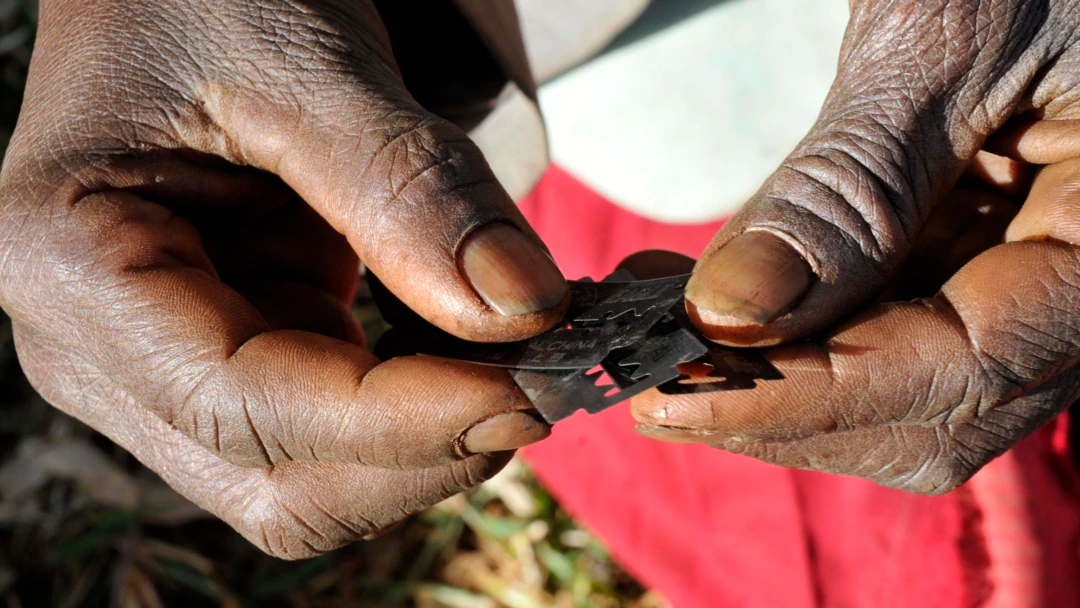How Should we Protect Women & Girls from Sexual Harassment & Violence?
As a list of men are accused of sexual harassments, in workplace institutions, schools, and back at home, many companies and institutions have done very little to address sexual harassment, which has contributed to hostile work environments not only for victims but also for many other women and men out there.
Gender-based violence undermines the health, dignity, security and autonomy of its victims, yet it remains shrouded in a culture of silence. Victims of violence can suffer sexual and reproductive health consequences, including forced and unwanted pregnancies, unsafe abortions, traumatic fistula, sexually transmitted infections including HIV, and even death.
We have recently experience a lot of cases of rape or sexual assaults in the past few weeks.
The gruesome murder of Velvine Kinyanjui and Jeniffer Wambua this past week sparked deeply emotional conversations on social media, with citizens demanding justice to be done with the trend #Justiceforvesh, the victims were sexually abused to death.
Velnine Kinyanjui died at Kenyatta University Referral Hospital while undergoing treatment, her spine was broken which led to her death.
Jeniffer Wambua a journalist was found in a forest and the autopsy showed she was raped and strangled to death.
Victims of sexual violence are not supposed to be blamed, it doesn’t matter what they wore, what they did or didn’t do, whether they are drunk or consumed drugs.
In order to avoid sexual violence we need to address risk and protective factors at the individual, community and societal levels. Sexual violence is a serious problem that can have a lasting harmful effects on the victims, family and friends.
By this, providing opportunities to support girls empowerment and creating protective environment to improve safety and monitoring in schools, establishing and consistently applying workplace policies, deterrent measures, among others.
Violence against women and girls is one of the most prevalent human rights violations in the world.
It knows no social, economic or national boundaries. Worldwide, an estimated one in three women will experience physical or sexual abuse in her lifetime.
FIDA-Kenya has come out to condemn the murder of Velvine Kinyanjui and Jeniffer Wambua.
“The numbers are worrying and FIDA-Kenya is concerned over safety and security of women and girls of the nation.”
What causes gender-based violence?
Gender-based violence, and in particular violence against women, is one of the most pronounced expressions of the unequal power relations between women and men.
The main cause of the violence is the perpetrator him or herself: it is very important to keep in mind that a person who has been affected by gender-based violence is never responsible for the perpetrator’s actions.
There is no single factor that can explain gender-based violence in our societies, but rather a myriad of factors contribute to it, and the interplay of these factors lies at the root of the problem.
Four types of factors can be identified:
Cultural factors
Patriarchal and sexist views legitimise violence to ensure the dominance and superiority of men. Other cultural factors include gender stereotypes and prejudice, normative expectations of femininity and masculinity, the socialization of gender, an understanding of the family sphere as private and under male authority, and a general acceptance of violence as part of the public sphere (e.g. street sexual harassment of women), and/or as an acceptable means to solve conflict and assert oneself.
Religious and historical traditions have sanctioned the physical punishment of women under the notion of entitlement and ownership of women. The concept of ownership, in turn, legitimises control over women’s sexuality, which, according to many legal codes, has been deemed essential to ensure patrilineal inheritance.
Sexuality is also tied to the concept of so-called family honour in many societies. Traditional norms in these societies allow the killing of women suspected of defiling the honour of the family by indulging in forbidden sex or marrying and divorcing without the consent of the family. Norms around sexuality also help to account for the high numbers of homeless LGBT+ young people, and for the prevalence of hate crimes against them, on the grounds that they are considered a “threat” to societal norms. The same norms around sexuality can help to account for the mass rape of women.
Legal factors
Being a victim of gender-based violence is perceived in many societies as shameful and weak, with many women still being considered guilty of attracting violence against themselves through their behaviour. This partly accounts for enduring low levels of reporting and investigation.
Until recently, the law in some countries still differentiated between the public and private spaces, which left women particularly vulnerable to domestic violence.
The Istanbul Convention ensures the right for everyone, particularly women, to live free from violence in both the public and the private spheres. While most forms of gender-based violence are criminalised in most countries, the practices of law enforcement in many cases favour the perpetrators, which helps to account for low levels of trust in public authorities and for the fact that most of these crimes go unreported.
The decriminalisation of homosexuality is still very recent in many societies. While progress has been achieved in many states by adopting equal marriage, this has sometimes led to a backlash, for example by strengthening opinions holding the traditional family to be the union between a man and a woman, or where countries have adopted laws that forbid “homosexual propaganda”.
Economic factors
The lack of economic resources generally makes women, but also LGBT+ people particularly vulnerable to violence. It creates patterns of violence and poverty that become self-perpetuating, making it extremely difficult for the victims to extricate themselves. When unemployment and poverty affect men, this can also cause them to assert their masculinity through violent means.
Political factors
The under-representation of women and LGBT+ people in power and politics means that they have fewer opportunities to shape the discussion and to affect changes in policy, or to adopt measures to combat gender-based violence and support equality. The topic of gender-based violence is in some cases deemed not to be important, with domestic violence also being given insufficient resources and attention. Women’s and LGBT+ movements have raised questions and increased public awareness around traditional gender norms, highlighting aspects of inequality. For some, this threat to the status quo has been used as a justification for violence.
Forms of Abuse & Violence against women and girls
In 2006, General Assembly (GA) resolution A/RES/61/143 called for an intensification of efforts to eliminate all forms of VAWG. The following year in Geneva, a UN Experts Group Meeting on Indicators to Measure Violence Against Women, organized by the former Division for the Advancement of Women (now part of UN Women), the Economic Commission for Europe and the UN Statistics Division, listed 12 forms of violence in need of further study. It also called for data collection methods and indicators to measure and quantify abuses of women and girls to be developed.


These were:
- Killing of women by intimate partners
- Female infanticide
- Threats of violence
- Economic and emotional/psychological violence as part of intimate partner violence
- Crimes committed against women in the name of ‘honour’
- Conflict/crisis-related violence against women
- Dowry-related violence
- Sexual exploitation
- Trafficking
- Femicide
- Forced marriage
- Sexual harassment
Prevention of gender-based violence
Prevention plays a central role in efforts to eradicate and remove the root causes of gender-based violence. Youth work and human rights activism can make an important contribution to such preventative work.
This might include:
- Work to change attitudes, or questioning gender roles and stereotypes that make gender-based violence acceptable in society. This can be done through organising campaigns, training, peer-to-peer education, or by including a gender equality dimension in all aspects of education policies;
- Providing accessible information about what gender-based violence is, about its different forms, possible remedies and existing support measures. This might include producing leaflets or websites, working on social media campaigns, creating TV spots, or making information available in youth centres and schools;
- Training professionals to be able to identify, address and respond to gender-based violence. This might include providing training for teachers, youth workers, social workers, trainers, the police, the justice system, health care providers, etc.;
- Revealing the scale of the problem: gender-based violence is rarely discussed, and data at a local or regional level is often not available, or is incomplete. Many victims choose not to report incidents, and certain forms of violence (e.g. sexist hate speech) may not be punishable by law. It is very important that the extent of the problem is made clear;
- Awareness raising campaigns and policies to address gender inequality and gender-based violence can also help to raise the importance of the problem in the public eye. Such campaigns might use traditional means, such as posters, leaflets and websites, but might also utilise social media and flash mobs, for example;
- Empowerment programmes which strengthen the self-esteem and autonomy of those sections of the population which are more likely to be at risk of violence;
- Furthering gender equality and human rights education for everyone.
—
Victims are advised to get out and seek help and not waiting for the situation to happen.
“FIDA appeals to the government to uphold mandate in protecting girls and women from the killers” FIDA-Kenya Chairperson Nancy Ikunu said.
FIDA also reported that their has been an increase in physical abuse of women by relatives, including in-laws with 76 rape cases reported.
You can reach FIDA-Kenya through the free toll number 0800 720 501.












